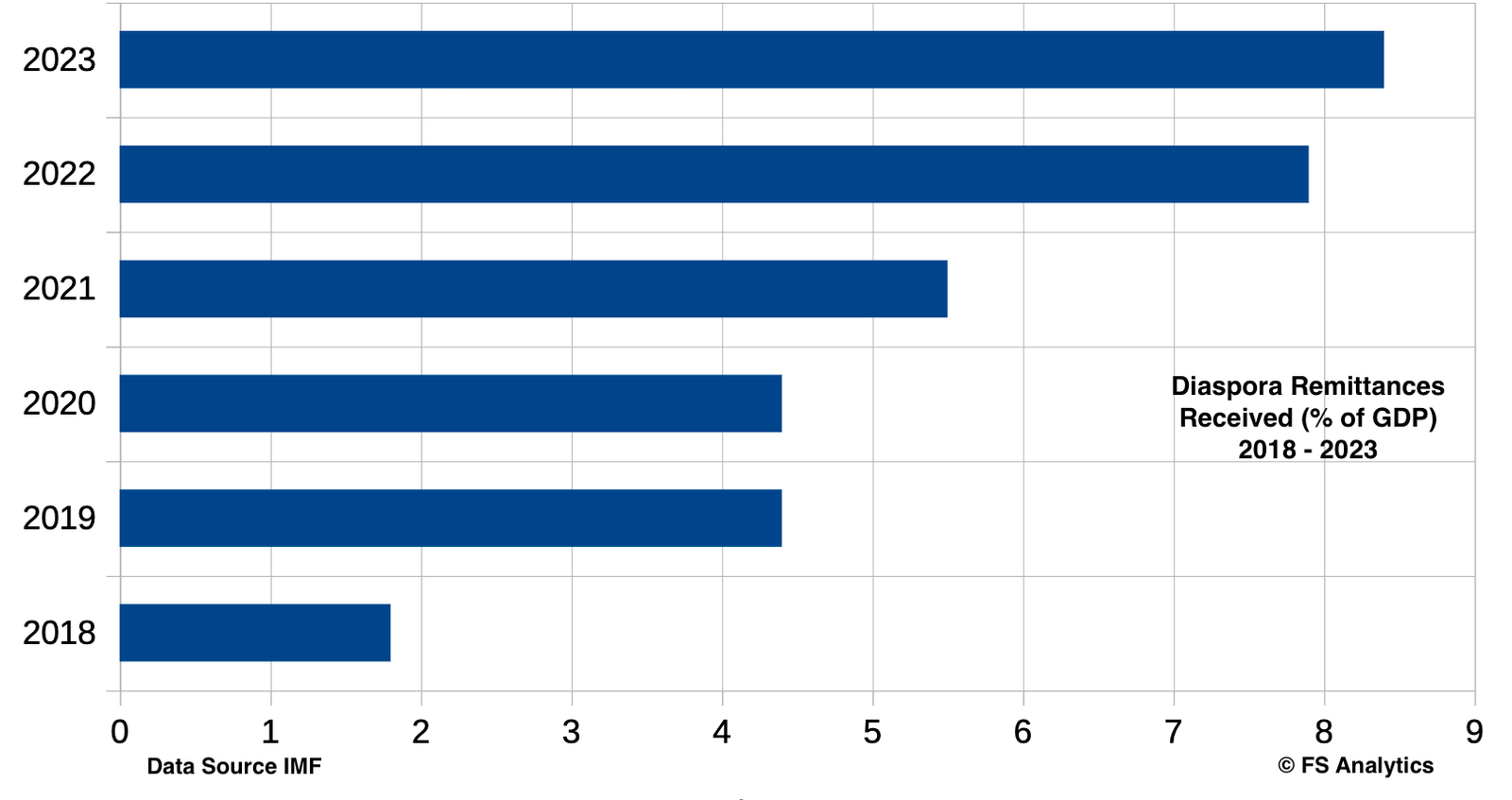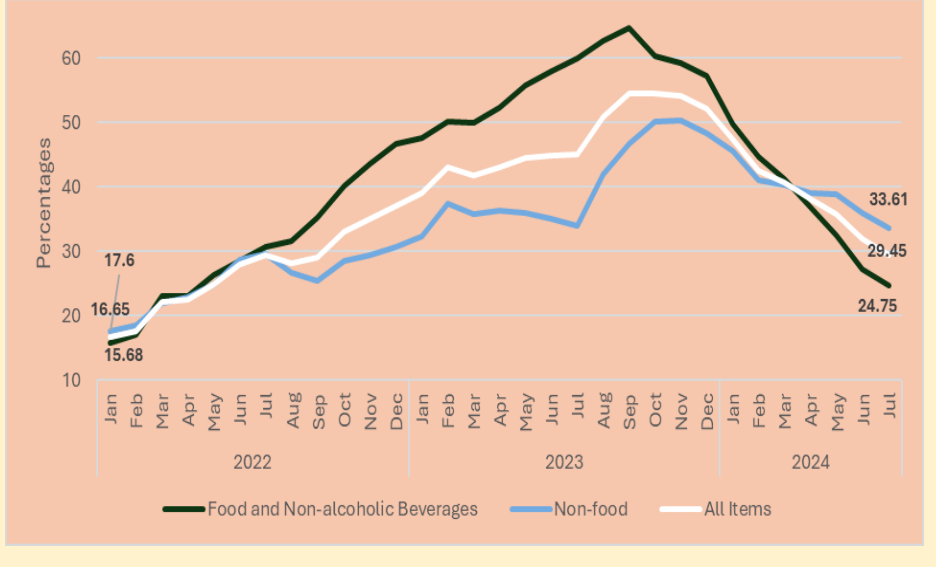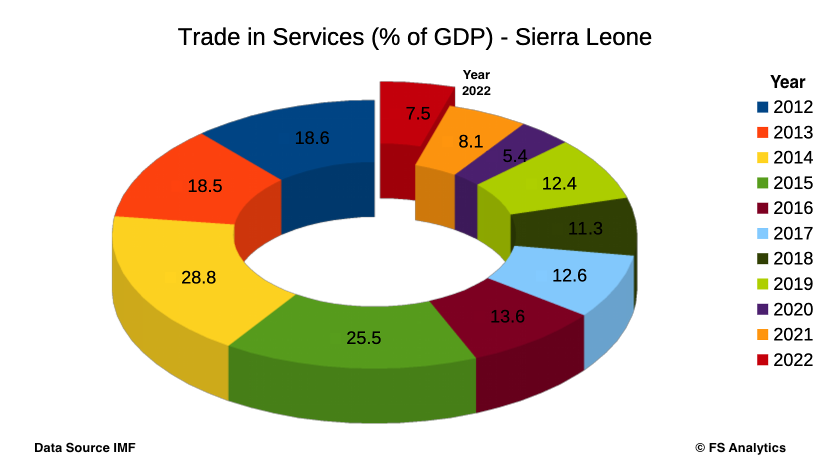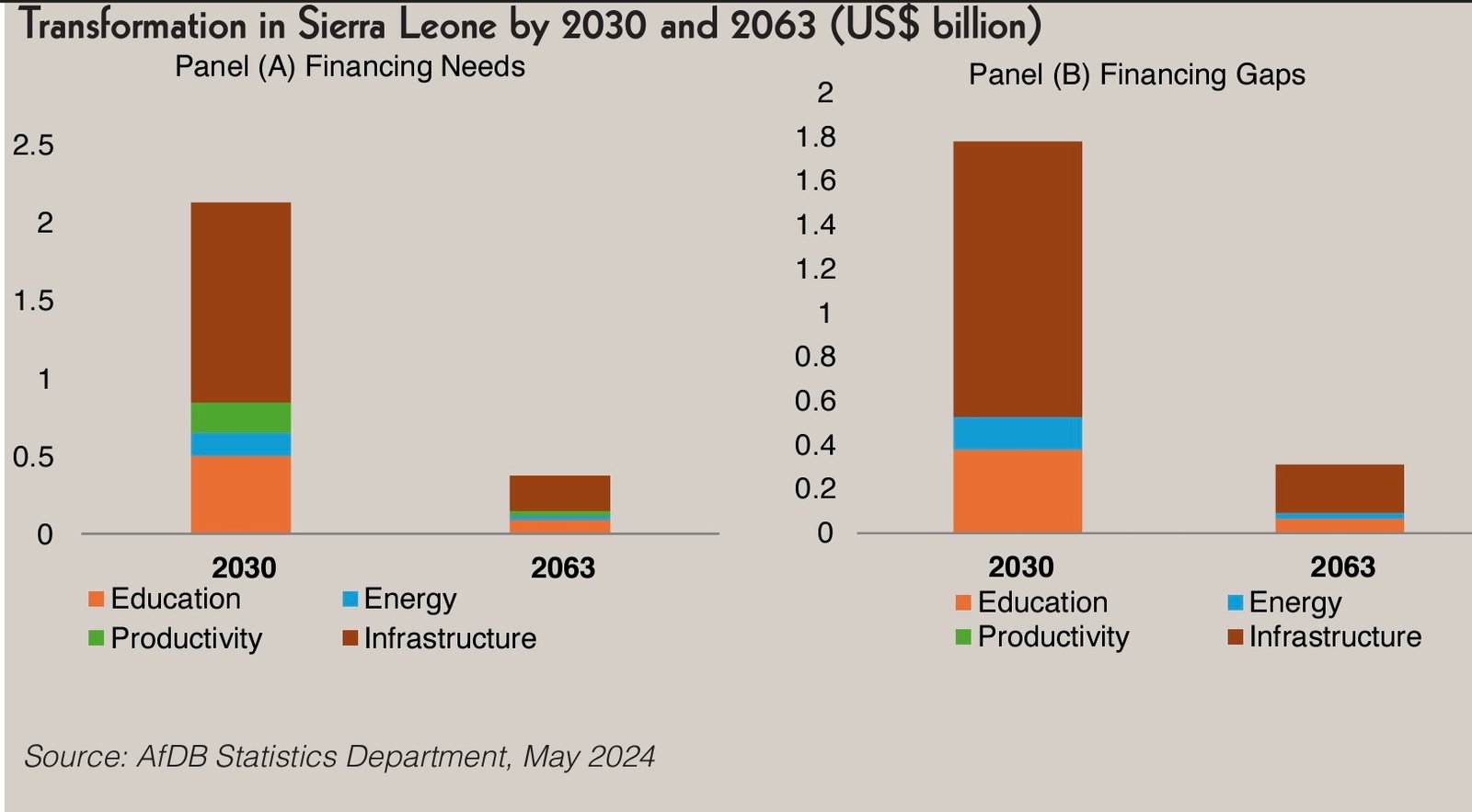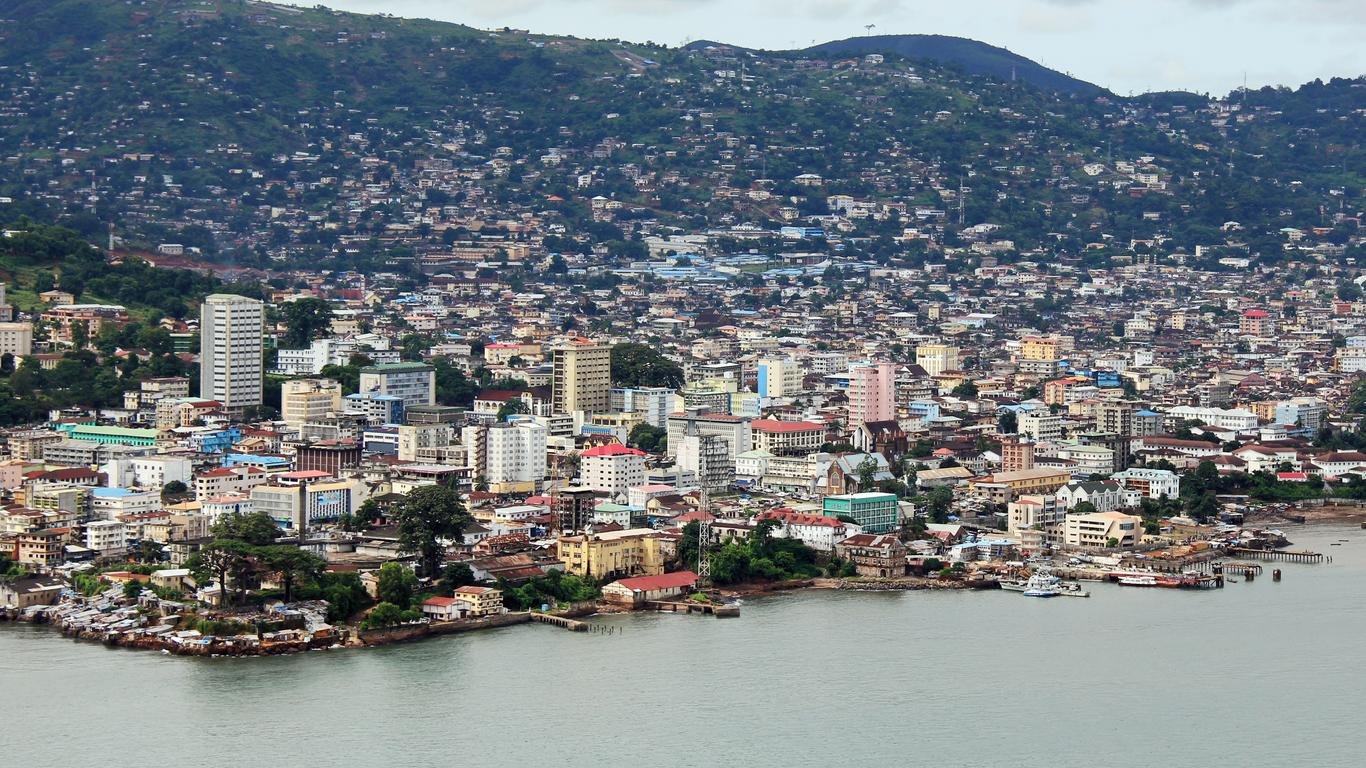Sierra Leone: Progress amid pains of global crisis
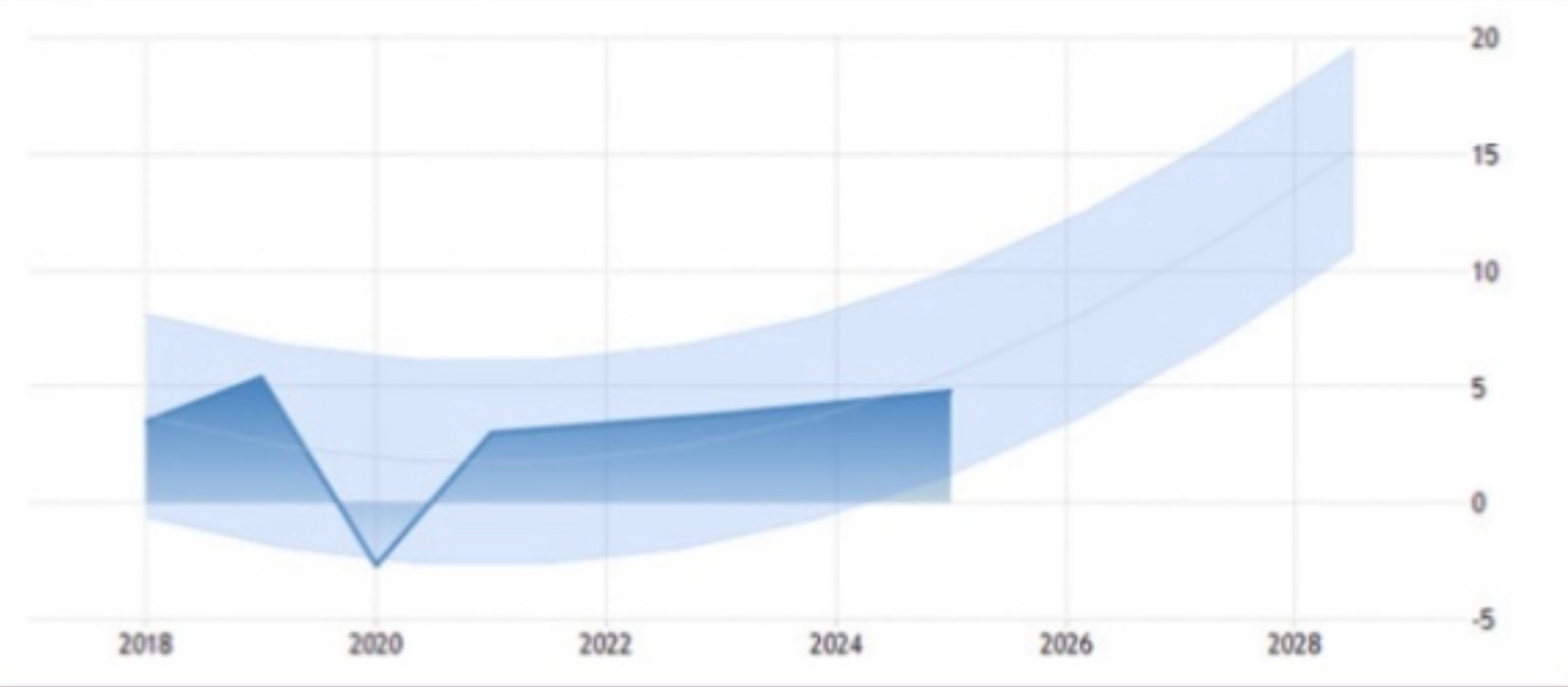 Sierra Leone Consumer Price Index
Sierra Leone Consumer Price Index
Amongst the poorest of Foreign Commonwealth and Development Office FCDO's priority countries, Sierra Leone has made remarkable progress on peace and stability after a painful history of conflict and diseases, taking significant strides to tackle its many human and development challenges. Sierra Leone was soaring on a stable political environment with successful transfers of power in recent years, until the recent sudden eruption of protest for increase in price commodities that led to the death of many lives of its citizens.
Assurances are being given by government over its commitments to improve human capital development and diversify the economy. There remain however huge challenges to securing sustainable development in Sierra Leone; a country that is still very much vulnerable to climate risks, a very small weak economy and a rapidly growing population that's posing threats to stability. Life expectancy in Sierra Leone is still amongst the lowest in the world with maternal mortality the highest.
There is stark gender inequality, and a substantial rural-urban divide, government institutions, systems and capacities are developing at a slow pace.
Among others, the UK is the largest bilateral development partner in the country. FCDO programming is framed around investing in the teamsters and enablers of a stable demographic transition, helping Sierra Leone both to manage the challenges of providing for a growing population and preparing to harness its potential.
The portfolio is built in enhancing human capital through increasingly equitable access to quality health and education. Further strengthening governance institutions, revenue, public financial management, accountability, stimulating investment for economic diversification, resilient growth, and job creation.
This economic approach has help man-aged the risk of population growth eroding human development outcomes, contributing to instability, and pushing transition further away. By combining work to deliver services, build systems and shape and deliver policy reform in priority areas, it should also accelerate Sierra Leone's development trajectory to deliver progress in human development outcomes and consolidate stability, under-pinned by stronger independent institutions and a more resilient economy that allows Sierra Leone to begin the process of reducing its dependence on aid.
However, Financial Standard findings show that foreign aid still plays big role in bridging fiscal gaps. The bulk still relies on subsistence agriculture. Sierra Leone has been steadily growing since the end of a devastating civil war in 2002. Diamond production is an important source of revenue. It accounts for 63 percent of total exports. Efforts at developing and fighting corruption in the sector is yielding fruit.. The country is expected to keep current pace of expansion in the sector.
Recent macroeconomic and financial developments is estimated to have grown by 3.2% in 2021 after a contraction of 2% in 2020. Growth was driven on the demand side by higher exports from mining and agribusiness, and on the supply side by resumption of iron ore production alongside recovery in other key sectors. From 2020 to 2021, inflation is estimated to have declined to 11% from 13.4% (due mainly to improved production and trade), the fiscal deficit to have widened to 7.1% of GDP from 5.6% (due to the impact of the Russia-Ukraine conflict), public debt to have edged up to 75% of GDP from 74%; and the current ac-count deficit to have narrowed to 13.9% of GDP from 16.7% (due to higher demand for commodities). The current account deficit is financed mainly by the financial account, notably FDI.
Gross foreign reserves increased to $695.0 million as at end-June 2021 from $653.8 million a year earlier (4.6 months of imports), reflecting disbursement of balance-of-payments support and the SDR allocation of $283 million (6.5% of GDP); of the latter, the majority will be used to boost reserves, $39 million will be spent on poverty-related areas, and $9 million on payment arrears. The exchange rate remained relatively stable. Sierra Leone's financial sector is underdeveloped but generally sound with a capital-adequacy ratio of 41.8% against a regulatory minimum of 15%. The country has high levels of poverty (56.8% reference in 2018), of income inequality, and of youth unemployment (70%) attributable to slow growth and lack of economic diversification.
Growth is projected to accelerate to 4% in 2022-driven by mining and the recovery of agriculture, manufacturing, construction, and tourism-and then to marginally improve to 4.2% in 2023. Inflation is projected to increase to 16.8% in 2022 due to the Russia-Ukraine conflict but to decline to 14.3% in 2023. The fiscal deficit is projected to narrow to 4.4% of GDP in 2022 and to 4% in 2023, due to higher tax revenue supported by improved economic activity and expenditure rationalization. The current account deficit is projected to widen to 16.6% of GDP in 2022 but to decline to 13.6% in 2023, as the resumption of iron ore production boosts export revenues. Downside risks include the global recession, an unexpected surge in COVID-19 cases, a more than forecast rise in international fuel and food prices and freight costs, and a fall in iron ore prices. The government aims to boost vaccination outreach, as well as accelerate reforms to diversify and transform the economy to withstand recur-ring external shocks.
Sierra Leone is highly vulnerable to climate change, particularly extreme events including high temperatures, inconsistent weather patterns, recurrent storms, floods, mudslides, and a rising sea level. It was 86 on the 2019 Climate Risk Index. Sierra Leone has adopted a National Climate Change Policy, while its Medium-Term National Development Plan 2019-23 underscores the need for aligning environmental, climate, and economic development plans to mitigate the causes of global warming and help citizens adapt. Sierra Leone's NDC underscores that climate change mitigation is particularly crucial, as the country is ranked one of the least able to adapt to climate change. The NDC envisions achieving a reduction in the country's GHG emissions by 10% in 2030 from 74,655 Gg of CO2 equivalent in 2020. The NDC's financing needs are estimated at $2.76 billion for 2020-30, to be mobilized from public and private sources and international support under the Global Environment Facility and GCE, technology transfer, and technical assistance. Sierra Leone is likely to meet SDG 13 by 2030.
GDP Annual Growth Rate
The Gross Domestic Product (GDP) in Sierra Leone expanded 3 percent in the fourth quarter of 2021 as of the previous -2.70 over the same quarter of the previous year. GDP is the measures of national income and output for Sierra Leone's economy, it is equal to the total expenditures for all final goods and services produced within Sierra Leone in a predetermined period.
With data collected from Statistics Sierra Leone, Financial Standard Sierra Leone (FSSL) was able to analysis the data and make projections from the year 2018 to 2022.
GDP Annual Growth Rate in Sierra Leone is expected to reach 3.80 percent by the end of 2022, according to FSSL models and analysts' expectations. In the long-term, the Sierra Leone GDP Annual Growth Rate is projected to trend around 4.30 percent in 2023 and 4.80 percent in 2024, according to our econometric models.
Consumer Price Index CPI
With data sources from Statistics Sierra Leone, Consumer Price Index CPI in Sierra Leone increased to 118.16 points in June from 114.57 points in May of 2022.
Consumer Price Index CPI in Sierra Leone averaged 157.41 points from 2007 until 2022, reaching an all-time high of 318.20 points in September of 2020 and a record low of 86.89 points in January of 2021.
04-09-2022


